Good ideas matter. It’s hard to start a company if you don’t have an idea.
But… having one business idea is never enough.
Let me show you why.
Imagine you have an idea that you’re really passionate about. You set out excited to validate it with potential customers, but the feedback you get is disappointing. No one’s interested. No one wants to buy. Basically, the world is saying: “That’s interesting.”(which is the polite way of saying “No thank you.”)
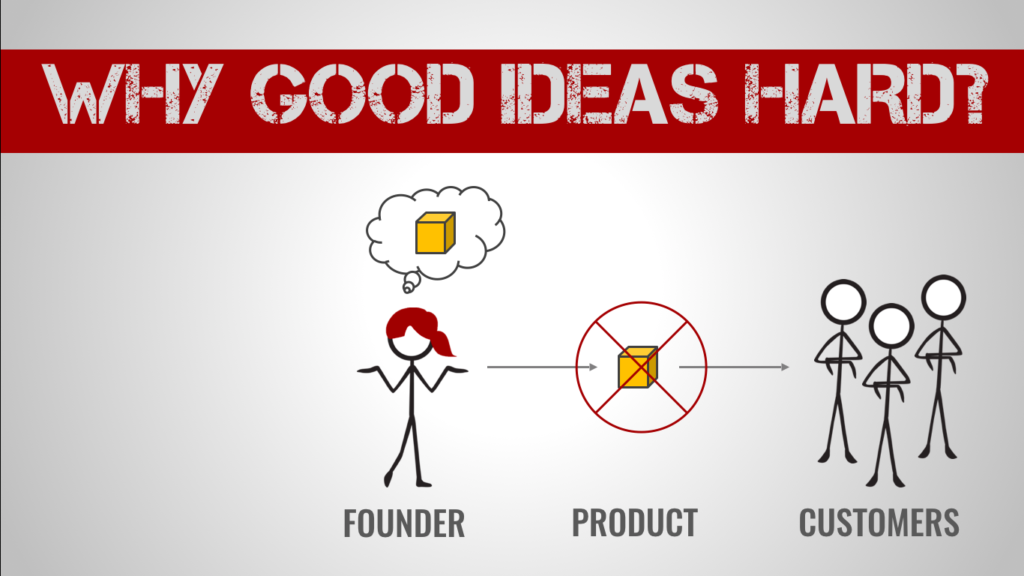
With only one idea, you’re left with 2 choices:
- Give up on your idea (and your identity as a founder).
- Ignore what your customers are telling you and press onward.
Both of these choices are terrible. I don’t want you to give up, and I don’t want you to ignore your customers.
You need a third option, and I want to recommend one: backup business ideas.
If you have a set of backup business ideas, you can listen to your customers with open ears and an open mind. So what if the world isn’t ready for first idea yet, as long as you have other ideas you’re excited about pivoting to.
Having backup ideas helps you validate your primary idea faster.
Why are Good Ideas Hard to Come By?
To come up with good ideas, we have to first understand why they’re so hard to come by.
Turns out, there are two types of people in the world:
- People who are bad at coming up with business ideas.
- People who are bad at coming up with good business ideas.
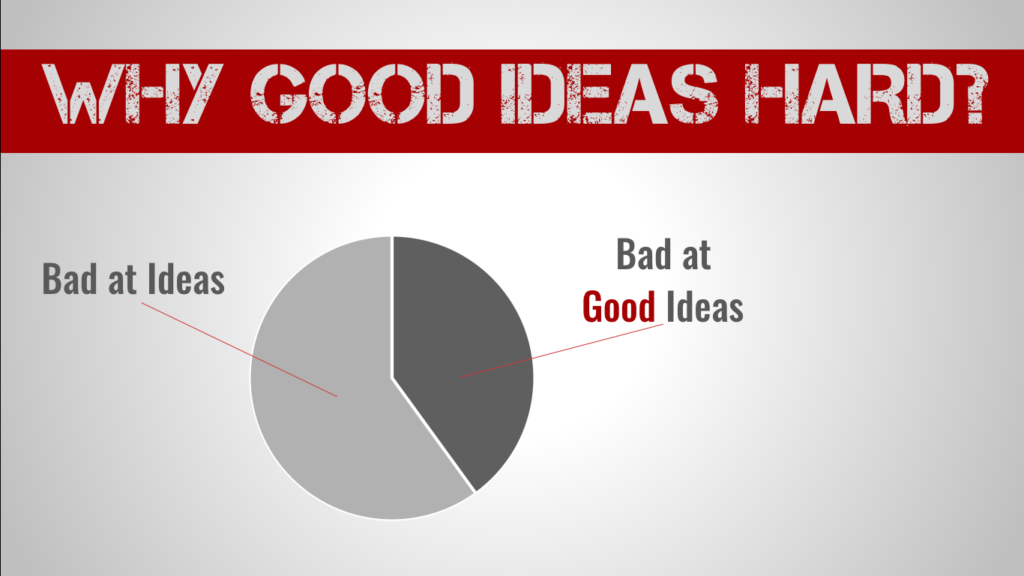
People who don’t identify as “creative thinkers” don’t believe they can come up with good business ideas.
While people who do identify as creative (myself included) come up with ideas on a daily basis. The problem is, no matter how excited we get about our ideas…they’re almost always awful.
No matter who you think you are—creative or non-creative—we’re all really bad at coming up with good business ideas. Here’s why.
Imagine someone coming up with a good business idea. What do you think that process looks like?
You’re probably thinking of someone, deep in thought, getting struck by some form of inspiration. At that moment, they’ve come up with some brilliant new app, service, or innovative widget. Unfortunately for that imaginary founder, their great new idea is doomed to fail – their customers, more than likely, are going to reject them. Why?
Customers reject products for one simple reason:
Customers don’t buy products. Customers buy solutions to problems.
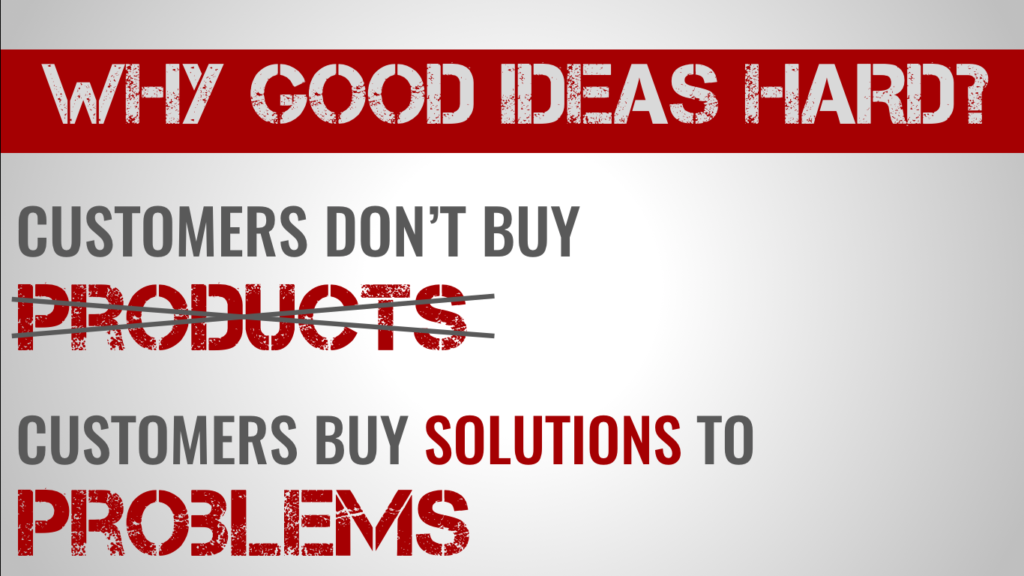
The Secret to Good Business Ideas
We can’t think our way to an interesting product. Since we know customers buy solutions to problems, we have to first start with the problem!
The secret to coming up with good business ideas isn’t to focus on the “idea” at all…it’s to focus on the problems we want to solve.
The ultimate secret to coming up with good ideas is to focus on the problem not the product.
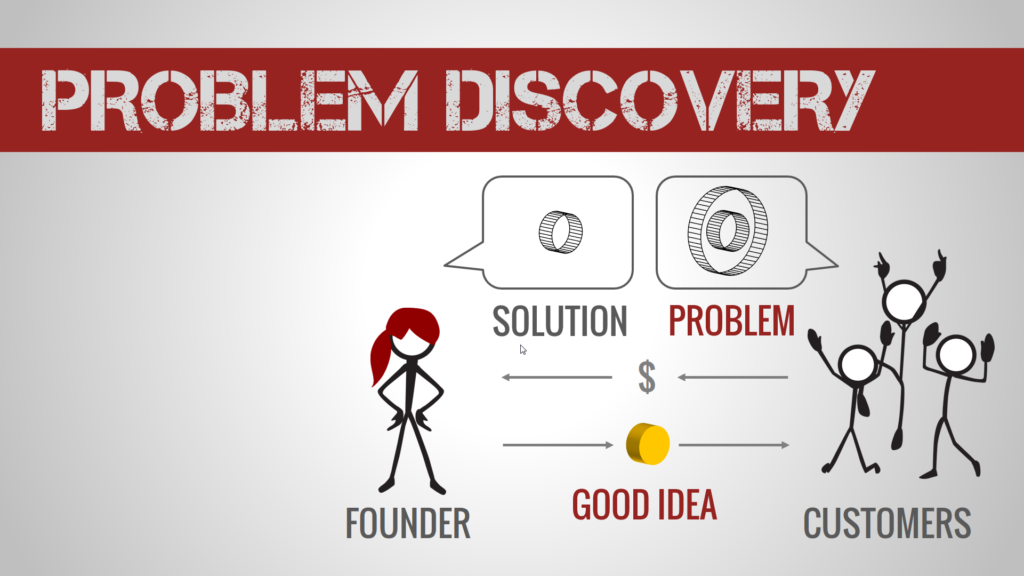
Problem Storming: Your Secret Weapon for Good Ideas
To figure out which problems you are uniquely suited to go and solve, let’s use an exercise called Problem Storming.
When I do this exercise in workshops with founders, we come up with at least 5 quality business problems to go solve.
Here’s a quick intro into how it works:
- Write down 2 groups of people you identify with, e.g. full-time working mothers, recent college graduates, vegetarians, etc..
- Now write down 2 different groups of people you’re passionate about helping, e.g. under-resourced children, skateboarders, meditators, etc.. You should now have at least 4 different groups of people written down.
- Write 2 potential problems that each group might be trying to solve right now.
For instance, skateboarders might have problems transporting their skateboard on public transit, working mothers may feel guilty that they don’t spend as much time helping their kids with homework as stay-at-home moms, etc.
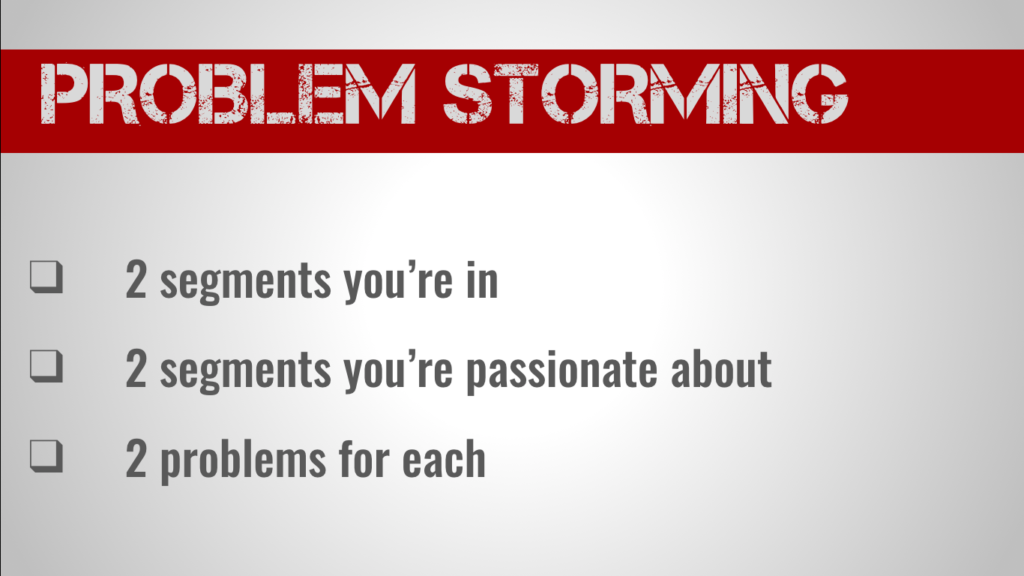
By the time you’re finished, you’ll have at least 8 different problems you are uniquely suited to solve because…
- you experience the problem yourself OR
- you’re passionate about solving that problem for others.
This is the beginning of the Problem Storming process. After 8 ideas, you’ll have at least 1— probably 2—promising problems to go investigate.
What’s Next
If you only take one thing away from this lesson, it should be this:
Customers don’t buy products. Customers buy solutions to problems.
So the secret to good business ideas isn’t to focus on the “idea”, it’s to focus on “problems.” When you use your customers’ problems as the inspiration for your “idea”, your customers will be so elated, they’ll pre-pay you for the solution:
That’s how you know you’re on track to a good idea.
Keep Problem Storming until you have at least 3 problems you’re excited to solve. Once you have those, it’s time to prioritize those problems and start validating that people are trying to solve them!
Want Some Help?
Take a look at the full Idea Generation Process. It will help you:
- Explore all of the problems you're uniquely suited to solve
- Identify the best one for you to tackle
- And come up with at least 5 backup ideas you're excited about
The Idea Generation Process is the second exercise in the FOCUS Framework workbook series.
FOCUS breaks down the overwhelming process of finding Product-Market Fit, into actionable steps.
If you want help applying the Lean Startup or Business Model Validation processes, take a look at the FOCUS Framework.




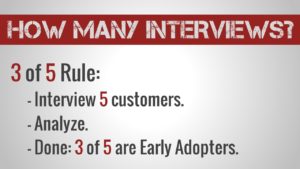

Just saw a video of yours where you suggest to focus on finding a problem and not the product (How to Find Good Business Ideas)
Although your suggestion is quite logical and part of me wants to believe but what do you have to say about Steve Jobs saying; “You can’t just ask customers what they want and then try to give that to them. By the time you get it built, they’ll want something new”.
Looking forward!
This is a fantastic question and I’m grateful you brought it up Amy, but I’m sure you’re not the only person wondering.
The quote you mention is similar to another quote that comes up quite a bit around this topic, one supposedly* from Henry Ford, “If I asked customers what they wanted, they would have told me a faster horse.”
The key distinction here is that we don’t want to ask customer what they want us to build, we’re asking what problems they want us to solve. I agree w/ both Jobs and Ford, never rely on your customers to tell you what product to build, that’s not their job – that’s your job.
Instead, it’s a customer’s job to live their life and experience the frustrations associated with that life. Listen to those frustrations and you’ll know exactly what product you should build.
In the case of the car, “it takes too long to get places” is the problem (courtesy of the customer), and the automobile is the solution (courtesy of Ford). For the iPod, “it’s a pain to listen to my downloaded music” (courtesy of the customer) which leads to the design of a revolutionary music listening experiment.
In short you’re right. Don’t let your customers tell you what product to build, let them tell you what problem to solve. Then you design the solution.